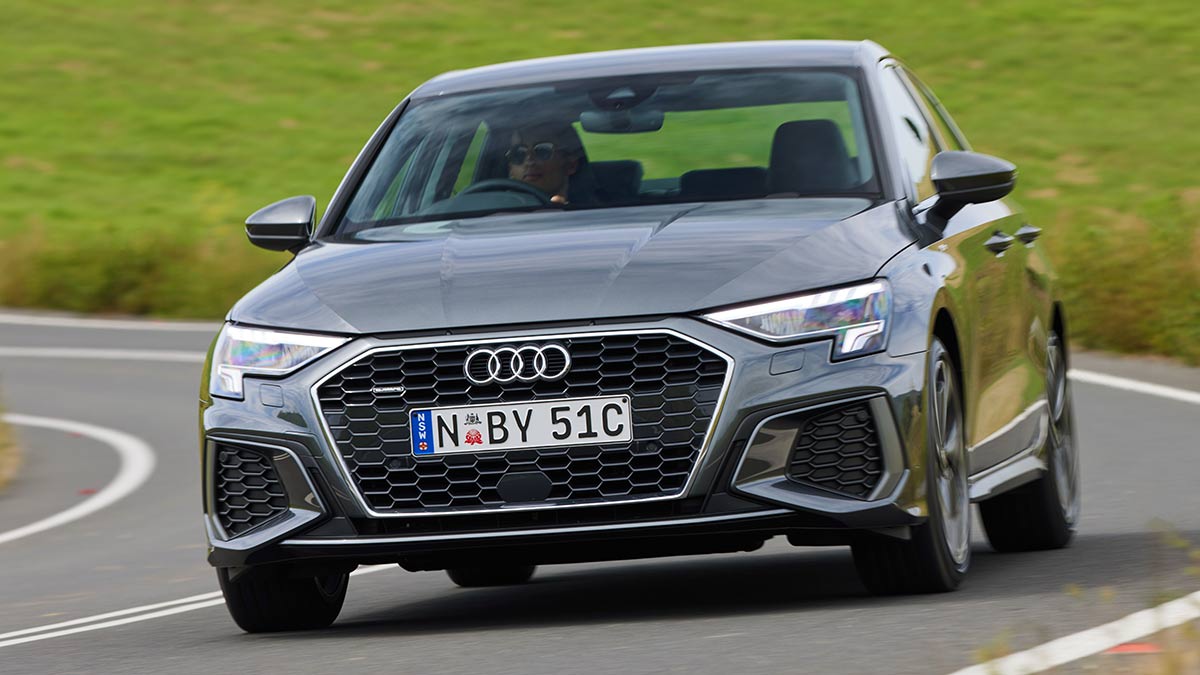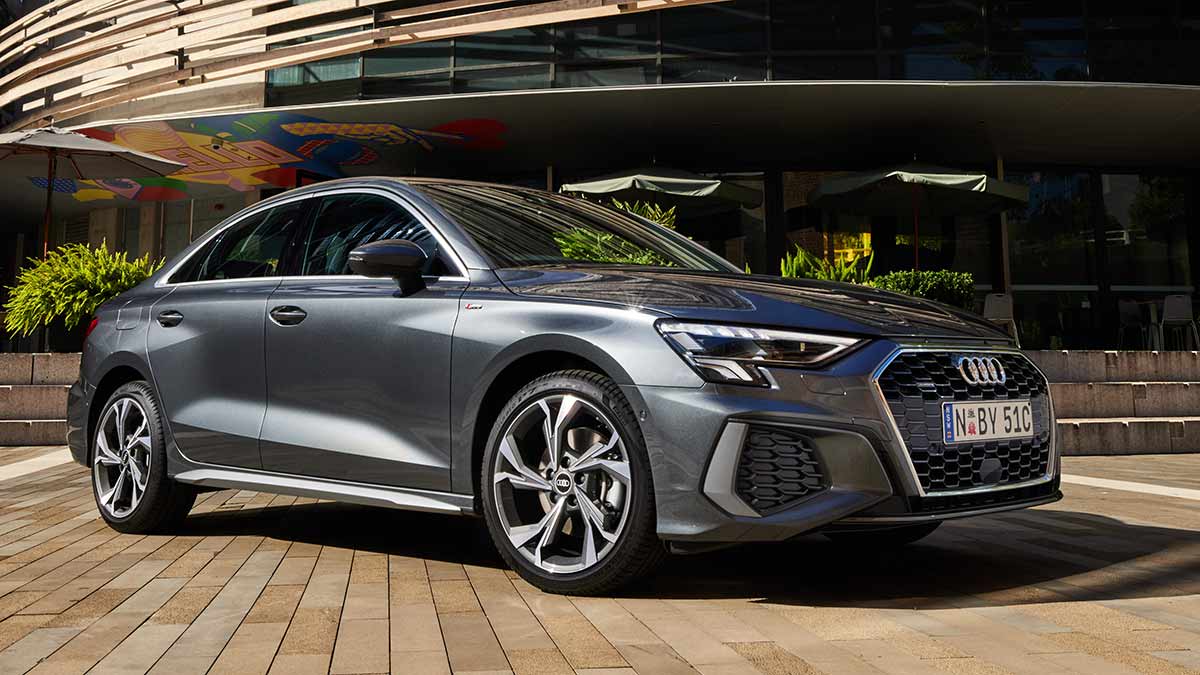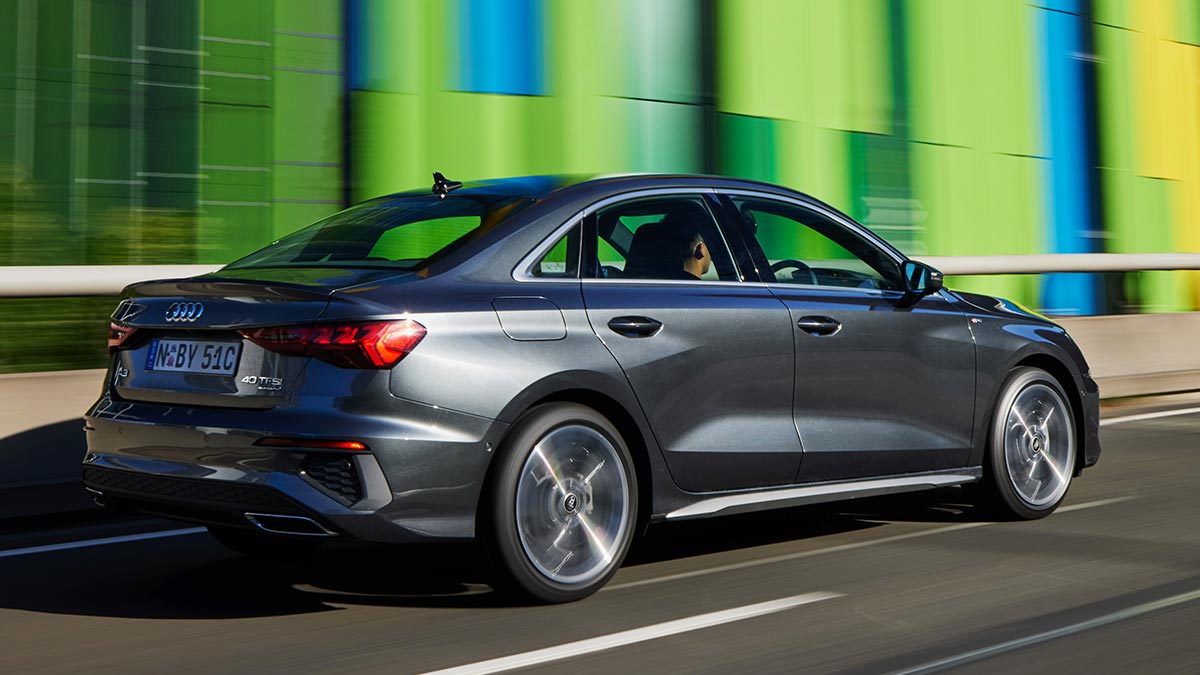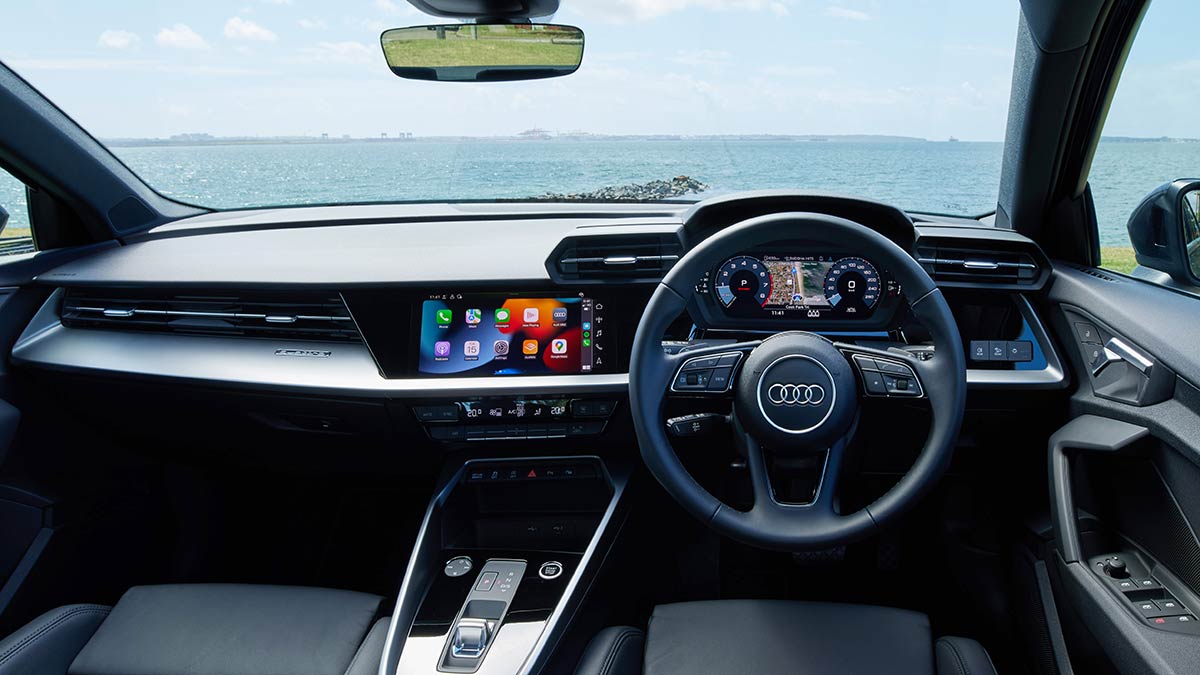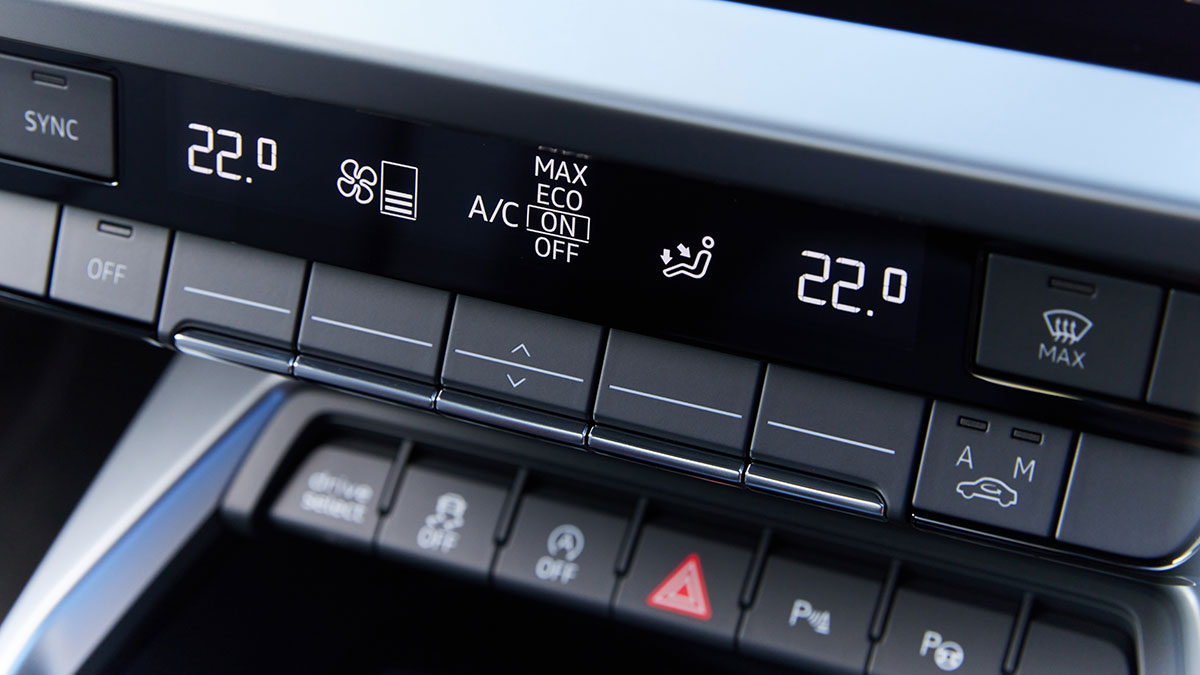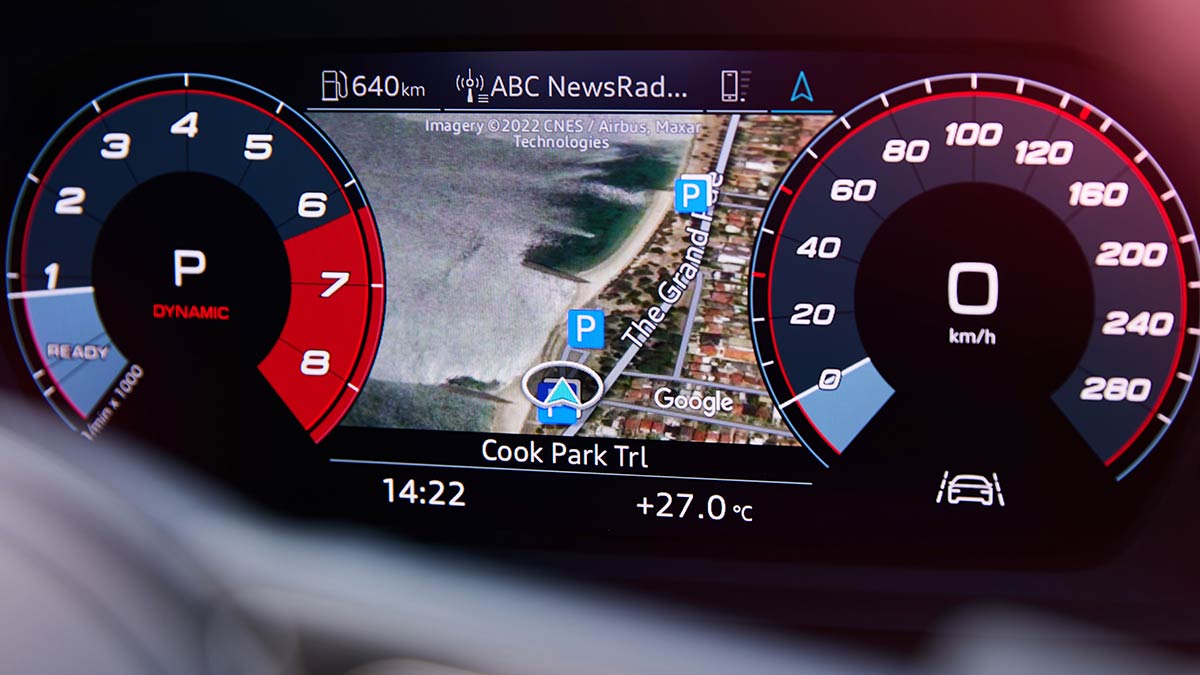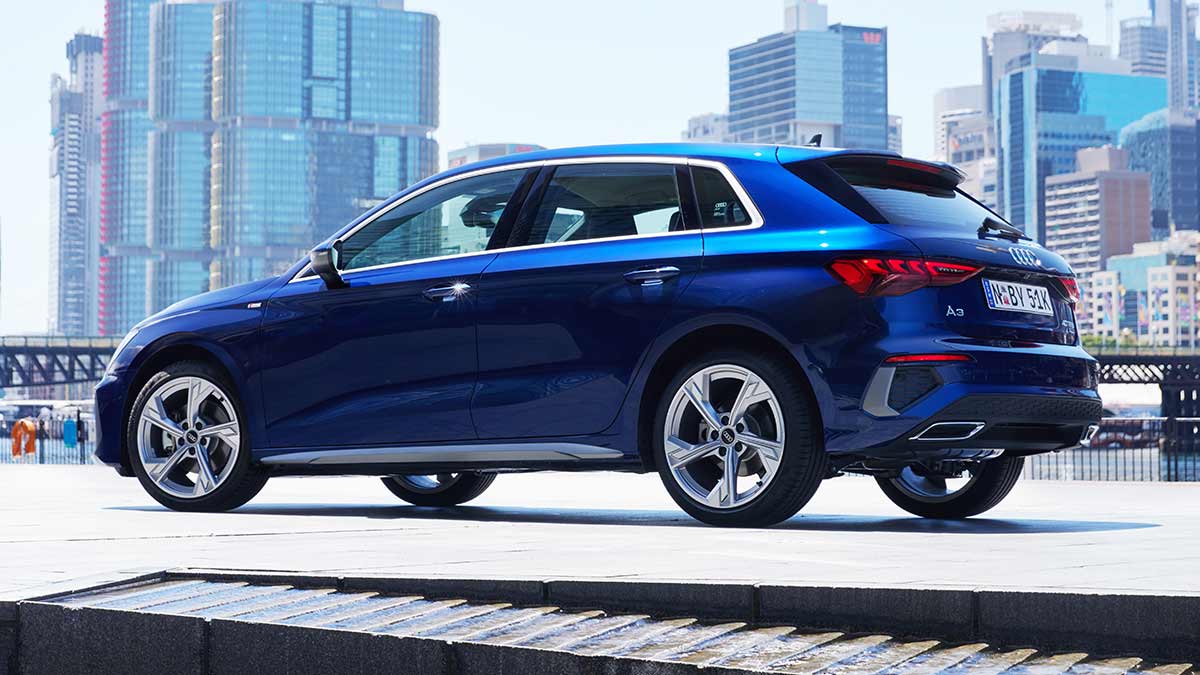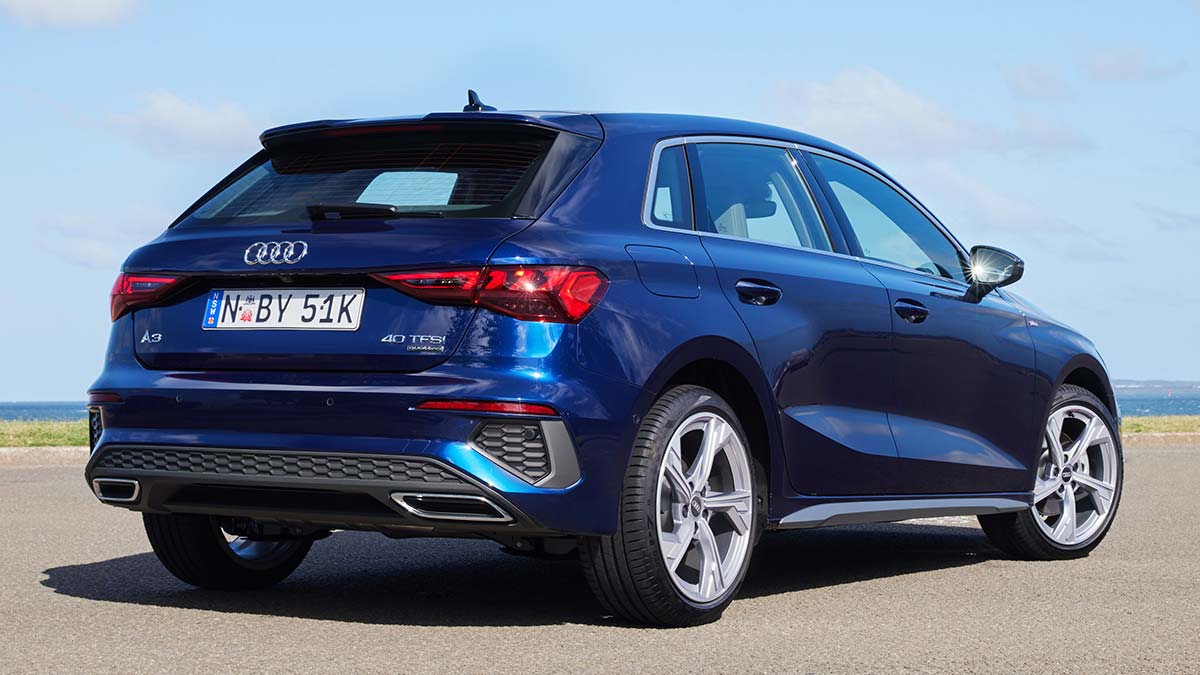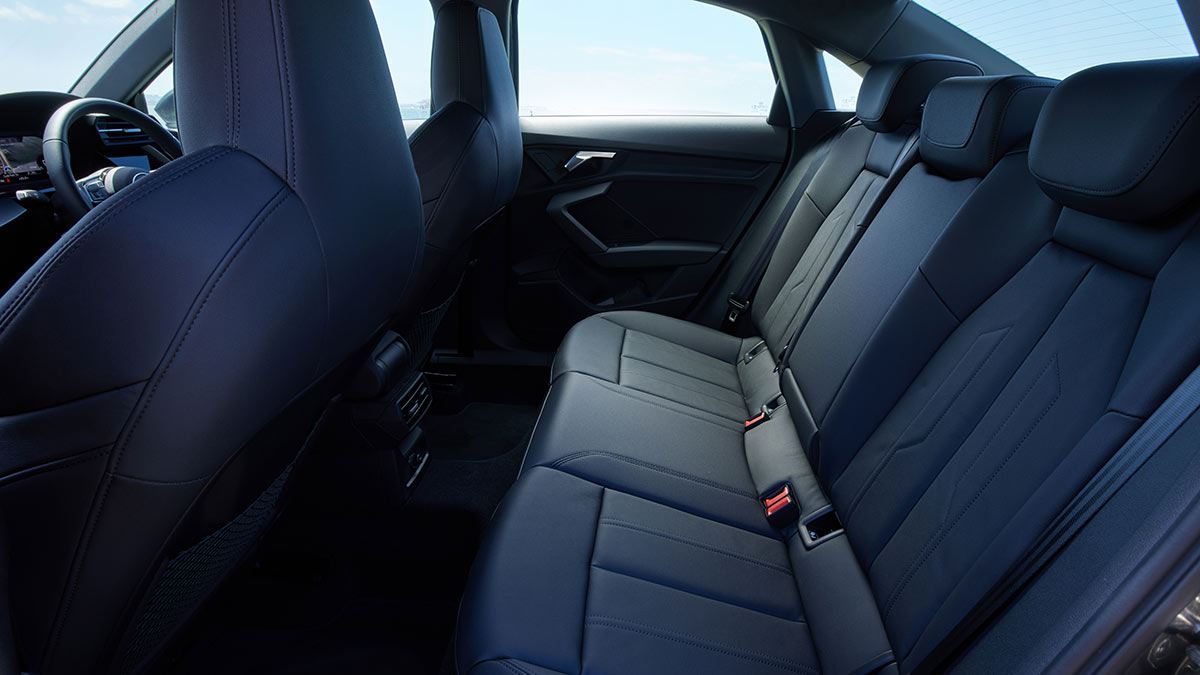The ninth-generation Toyota HiLux has arrived, bringing with it a futuristic forward exterior design, more safety and tech and the same rugged capability owners love. Will the updates tempt private buyers away from the Ford Ranger or are they just enough to keep fleets onside?
Making a marque: 2022 Audi A3 40 TFSI road test review

The A3 is Audi’s best-selling passenger car for good reason, with the latest version improving its competitiveness against the Mercedes-Benz A-Class and BMW 1 and 2 Series models.
The company that essentially invented the premium small car segment continues to be a benchmark player.
Audi has gone hard with the tweaks to its latest A3 range, and the results are evident, largely for the better, and occasionally for the worse.
The good news is the technology infusion in the cabin: from the easily adjusted digital driver’s display to the infotainment touchscreen with its haptic feedback.
The downside is some of the plastics aren’t as high grade as Audi owners are accustomed to. Audi’s reserved their use for places that aren’t typically seen or touched but the cost-cutting shows just how competitive this segment is.
On this page
- How much does the Audi A3 wagon cost?
- Is the Audi A3 safe?
- What's the Audi A3 40 TFSI wagon like inside?
- What's under the Audi A3 40 TFSI's bonnet?
- Is the Audi A3 40 TFSI efficient?
- How does the Audi A3 40 TFSI drive?
- Should I buy one?
How much does the Audi A3 cost?
The A3 range starts at $46,900 plus on-road costs for the “35” hatch (known as a Sportback in Audi-speak). The comparable sedan is $2,500 more expensive.
The “40” versions use a bigger engine and adopt Audi’s signature “Quattro” all-wheel-drive set-up.
Prices start at $53,500 for the hatch or $56,000 for the sedan. In Victoria, that works out to be $59,761 and $62,362 driveaway respectively.
That’s about on a par with BMW’s 128i hatch and 220i sedan. The equivalent Mercedes-Benz A250 models are around $9,000 more expensive.
Those with a need for speed can buy the Audi S3 for $73,200 plus on-roads or the potent RS3 for $94,700.
There is only one option for the A3 40 TFSI: a $4,500 “premium package” that bundles a head-up display, adaptive cruise control (which should be standard at this price), aluminium-look trim, electric front seats with heating and a premium 10-speaker sound system.
Pre-paid servicing costs over the five-year warranty period are $2,250 for annual/15,000km visits.
Is the Audi A3 safe?
ANCAP rates the front-wheel-drive versions of the Audi A3 as five-star cars; the quattro versions haven’t been tested.
Adult occupant protection was rated at 89 per cent, child occupant protection came in at 81 per cent, vulnerable road user protection was deemed to be 68 per cent and safety assist systems scored 73 per cent.
The biggest criticism ANCAP found was a marginal result for the driver’s chest and lower legs in the frontal offset test.
Seven airbags are standard, including the centre bag to stop front seat occupants from butting heads.
What’s the Audi A3 like inside?
The tactile points in the Audi A3 are as quality as you’d expect at this price point. Look harder and there are some non-premium hard plastics evident, but the overall ambience is about what you’d hope for.
The digital displays are the highlight. Audi pioneered the digital display and shows no indication of losing ground with this version. The driver’s screen can be configured in a variety of ways, including having the (hi-res) map shown with the tacho and speedo overlaid on the left and right sides respectively.
A 10.1-inch touchscreen powers most of the essential functions, from digital audio to phone connectivity. Audi has smartly resisted the temptation to digitize the air-conditioning functions and they operate using conventional switchgear located just under the screen. Apple CarPlay is wireless, Android Auto users will need a cable.
The seats are first rate in the 40 TFSI sedan the RACV tested. The ergonomics are likewise spot on, though some may find the steering wheel a touch thick. It’s a personal preference thing.
Boot space is a decent 425 litres in the sedan. Choose the Sportback and that drops to 380 litres.
What’s under the Audi A3 40 TFSI’s bonnet?
A turbocharged 2.0-litre four-cylinder engine cranks out 140kW and 320Nm; the latter available from 1500-4100 revs.
It makes for linear, effortless acceleration and the seven-speed dual-clutch transmission is also among the best of its type.
The engine and transmission mapping (along with damper and steering feel) can be adjusted using the drive modes switch located below the aircon controls.
Is the Audi A3 40 TFSI efficient?
Audi quotes a combined use of 6.6 litres for the sedan or 6.7 litres for the Sportback. Those figures climb by 2.0 litres in urban driving.
During our week-long stint, we saw figures in the high-eights.
Being a European vehicle, Audi says the A3 should be run on 95 RON fuel. The tank is 55 litres.
In terms of the opposition a BMW 220i uses a claimed combined 6.3 litres/100km, while the Mercedes-Benz A250 4Matic ingests 6.8 litres/100km.
How does the Audi A3 40 TFSI drive?
Slide behind the wheel of the Audi A3 and the experience is already good. The driver’s display is a highly reactive digital device. I’ve lost count of the number of times I’ve stopped at an intersection the digital speedo is still indicating I’m in motion.
That doesn’t happen in the A3, which I put down to the refresh rate.
The seven-speed dual-clutch auto is also relatively lag-free when taking off (allowing for the auto stop-start, which I tend to switch off anyway).
Driven in normal conditions, the A3 40 TFSI operates as a front-wheel-drive vehicle. Push it and the electronics send power to the rear wheels as required.
And if the driver requires it, that can be appreciatively quick. Audi quotes a 100km/h sprint time of 7.0 seconds; I’d venture to suggest it’s slightly faster than that.
The steering weight varies according to the drive mode, so in the default comfort setting it is reassuringly light, enabling quick lane changes without having to haul the wheel.
It is also a case of Audi evolving to deliver more feedback through that wheel. Previous generations were direct but didn’t deliver much in the way of what those front wheels were actually doing.
The safety software is unobtrusive and the biggest criticism is reserved for tyre noise on coarse surfaces.
Should I buy one?
Existing A3 owners will baulk at the price increase of this version.
That observation applies to most new cars, predominantly as a result of rising inflation and the cost of accessing hi-tech parts.
In terms of its positioning in the premium small-car segment, the A3 40 TFSI is probably the sweet spot.
It lacks the 48-volt mild-hybrid tech of the front-wheel-drive A3 35 but doesn’t appreciably suffer in terms of fuel efficiency and the extra power will be welcomed by many who venture out of the city confines.
The information provided is general advice only. Before making any decisions please consider your own circumstances and the Product Disclosure Statement and Target Market Determinations. For copies, visit racv.com.au. As distributor, RACV Insurance Services Pty Ltd AFS Licence No. 230039 receives commission for each policy sold or renewed. Product(s) issued by Insurance Manufacturers of Australia ABN 93 004 208 084 AFS Licence No. 227678.
